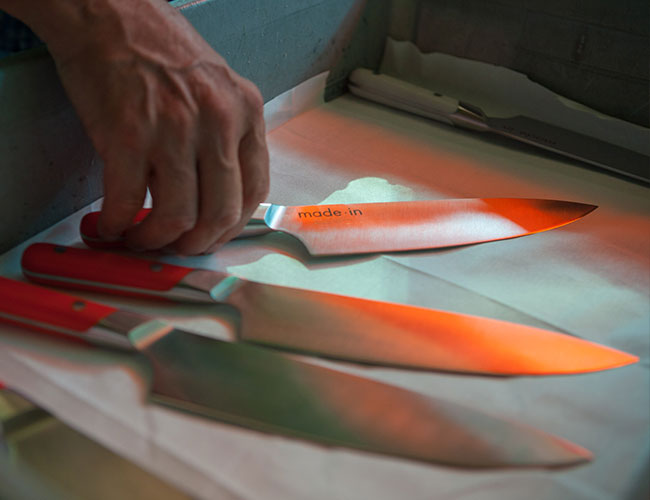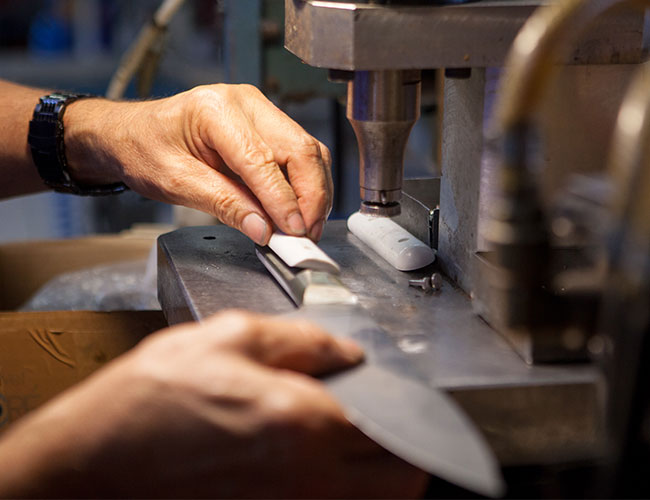Based in Austin, Texas, Made In Cookware already produces some of the best pots and pans for the money on the market. Now it makes more than just pots and pans and, again, takes aim at pulling materials made with real, quality materials down a few price pegs.
The Made In chef’s knife launched this morning, and it features material, construction and design DNA with chef’s knives from major players in the kitchen knife space, but at a price point that’s a fraction of similar blades.
“We wanted to adhere primarily to the characteristics of Western-style knives, since we’re made in Thiers, France,” said Made In co-founder Jack Kalick, “Thiers is known as the knife-making capital of the world, and has been doing so for over 700 years, so the inspiration was a no-brainer.”

Pictured: Made In’s chef’s knife, which is forged in France of German X50CrMoV15 steel, the same steel found in Wustof and Victorinox’s signature knives.
The blade is forged and utilizes X50CrMoV15 steel, which is a very confusing way of saying its a mixture of carbon, chromium, molybdenium, vanadium, manganese and silicon. Further, it is best described as a relatively low-carbon carbon steel, or, by some, as a high carbon stainless steel — this basically means it carries some traits from both carbon and stainless steel knives.
Kalick said as much when we asked him about it, “We specifically chose X50CrMoV15 stainless steel because it’s a cornerstone for premium western knives. It combines good carbon content with stainless steel properties to ensure a durable and resistant blade.”

The handle of Kalick’s knife is the only departure from classic Western chef’s knives. It was designed with a slightly rounded profile, and added a gradual flare to help with grip. “This is the one aspect of the knife that may lean a little Eastern in style, but we like its comfort for hands of all sizes,” Kalick said.
What kind of performance differences do you get with a knife that rides the line between carbon and stainless steel? Because of a higher percentage of chromium, it is far, far more corrosion resistant and stain resistant than a carbon steel knife (which will rust very quickly if left in the sink or with moisture on its surface). But it is also a rather soft steel, meaning it loses its edge a bit more quickly than a carbon steel might (invest in a home sharpening system, they’re pretty cheap). Finally, and this is a good thing, it’s far less brittle than carbon steel knives, which are far more prone to chipping at awkward angles on your cutting board or an accidental drop.
According to Made In, what separates its knife is an additional step it takes to increase hardness and further protect it from chipping — a nitrogen finish. Much better explained by Knife Steel Nerds, the gist is the finish allows the knife to be much harder (and, somewhat confusingly easier to sharpen) than most stainless steel while also keeping its high chromium content (which allows it to be stain and rust resistant).
As Kalick noted, X50CrMoV15 steel also happens to be a staple of high-end Western knives — it’s the steel type Wüsthof, Victorinox and others use in their signature blades (both are somewhat more expensive than Made In’s knife).
The Made In chef’s knife is available now for $89.

